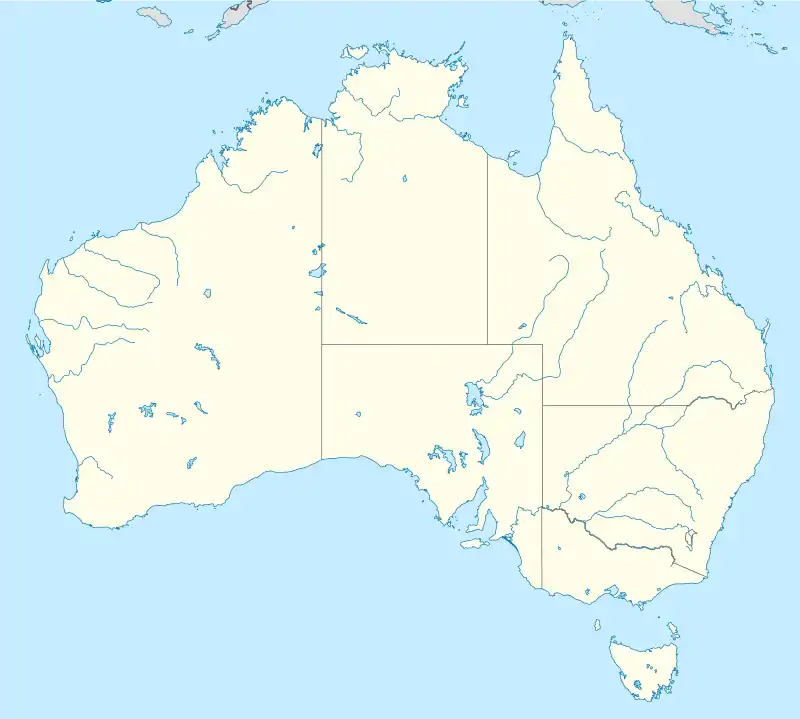 | |
| Formation | 1999 |
|---|---|
| Headquarters | Melbourne, Victoria |
Region served | Australia |
Membership | |
Chair | Harlene Hayne[1] |
| Website | www |
The Australian Technology Network (ATN) is a network of six Australian universities, with a strong history of innovation, enterprise and working closely with industry. ATN traces its origins back to 1975 as the Directors of Central Institutes of Technology (DOCIT), and was revived in 1999 in its present form with changes to its membership announced in 2018, 2020, 2021 and 2023.
ATN is the second largest university grouping in Australia, in terms of student numbers and research funding.[2]
History
The ATN originated in 1975 as the "Directors of Central Institutes of Technology (DOCIT)", a conference group consisting of the directors of Australia's leading "institutes of technology". Each of DOCIT's original member institutions (NSWIT, QIT, RMIT, SAIT and WAIT[note 1]) were located in the central business district of their respective state's capital city, hence they were deemed "central institutes of technology".
DOCIT founded its original member institutes' distinctiveness on their size (they enrolled almost one third of all full-time advanced education students), on the advanced level of their teaching (most of their programs were degrees rather than the diplomas like that of other advanced education institutions) and their conduct of applied research (DEET, 1993:18). They were therefore like a "technology-focused" group.
DOCIT encountered too much opposition to its aspirations, and disbanded in 1982. The conference group was later revived in 1999 as the Australian Technology Network, consisting of: the Curtin University of Technology, Queensland University of Technology, Royal Melbourne Institute of Technology, University of South Australia and University of Technology Sydney. Each ATN member university was granted public university status between 1986 and 1992, however their antecedents make them some of the oldest tertiary institutions in Australia.
QUT departed ATN on 28 September 2018.[3]
Deakin University was announced as a new ATN member on 8 December 2020, bringing the Network's membership back up to five universities and making the network Australia's second largest university grouping in terms of student numbers and research funding. Deakin's membership bolsters ATN's geographic footprint with a presence in the regional gateway city of Geelong and regional Victoria.[4]
In November 2021, the University of Newcastle joined the Australian Technology Network as an Associate Member, becoming the sixth member of the network. Newcastle's membership further enahnced ATN's regional footprint into the Central Coast and Hunter regions. The University of Newcastle became a full member in 2023.
Members
| University | City | State | Established | University Status | THE World University Rankings 2023[5] | Academic Ranking of World Universities 2021[6] | QS World University Rankings 2024[7] | QS Top 50 Under 50 World Young University Rankings 2021[8] | THE 250 Young University Rankings 2022[9] |
|---|---|---|---|---|---|---|---|---|---|
| Curtin University | Perth | WA | 1902 | 1986 | 201-250 | 201-300 | 183 | 17 | 36= |
| Deakin University | Melbourne | VIC | 1974 | 1974 | 251-300 | 201-300 | 233= | 26= | 42 |
| RMIT University | Melbourne | VIC | 1887 | 1992 | 301-350 | 301-400 | 140 | 18 | 55= |
| University of Newcastle | Newcastle | NSW | 1951 | 1965 | 201-250 | 201-300 | 173= | N/A | N/A |
| University of South Australia | Adelaide | SA | 1856 | 1991 | 301-350 | 501-600 | 326= | 29 | 46 |
| University of Technology Sydney | Sydney | NSW | 1964 | 1988 | 133 | 201-300 | 90 | 11 | 8 |
See also
Notes
- ↑ Predecessors to University of Technology Sydney, Queensland University of Technology, RMIT University, University of South Australia, and Curtin University of Technology respectively.
References
- ↑ "Professor Harlene Hayne CNZM New Atn Chair". 19 April 2023.
- ↑ "The ATN Advantage" (PDF). Australian Technology Network. Retrieved 19 July 2022.
- ↑ ATN Membership Change Retrieved 4 October 2018.
- ↑ "Deakin joins ATN". www.atn.edu.au. 8 December 2020. Retrieved 16 December 2020.
- ↑ THE World University Rankings 2022 Retrieved 19 July 2022.
- ↑ Academic Ranking of World Universities 2021 Retrieved 19 July 2022.
- ↑ "QS World University Rankings 2024: Top global universities". Quacquarelli Symonds. Retrieved 30 June 2023.
- ↑ QS Top 50 Under 50 years World Young University Rankings 2021 Retrieved 23 June 2018.
- ↑ Times Higher Education Young University Rankings 2022 Retrieved 19 July 2022.


.jpg.webp)



